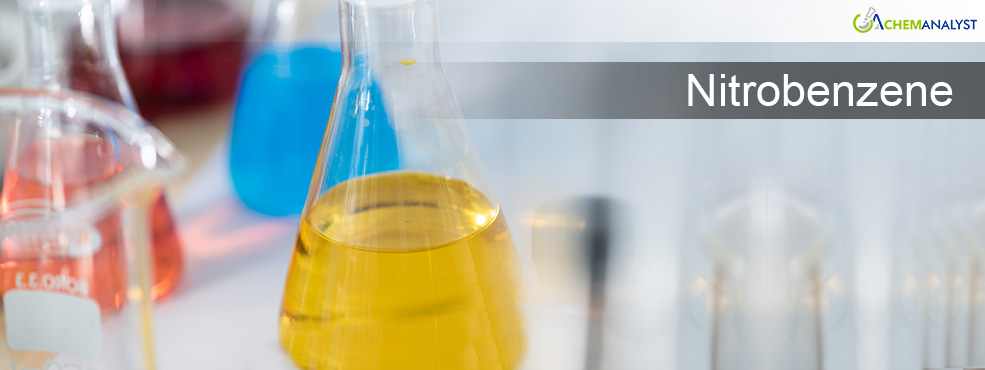Nitrobenzene Prices Dropped Further as Intermediate Chemicals Oversupply Persists in NE Asia
- 31-Oct-2024 2:00 PM
- Journalist: Sasha Fernandes
Nitrobenzene prices in Northeast Asia recently (late October) dropped by 4% on a weekly basis, as ChemAnalyst’s latest report shows. This decline in Nitrobenzene prices was driven by various factors, including reduced trade volumes in September and diminishing profits among Chinese producers in the Nitrobenzene value chain during Q3. Market adjustments followed, with prices dropping as sellers faced contracting spreads and shrinking margins.
Further contributing to this trend, Nitrobenzene prices have faced downward pressure from a surplus in downstream inventories, particularly within the aniline segment. Aniline prices dropped by 7% weekly, impacted by weaker demand from the pharmaceutical and polymeric MDI markets. Though MDI prices remained steady amid low demand, many MDI production plants were temporarily shut down to address the oversupply, leading to a domino effect on Nitrobenzene demand.
Since early 2022, Nitrobenzene demand within MDI and pharmaceuticals has weakened due to subdued consumer spending and rising stockpiles. A growing emphasis on electric vehicles (EVs) and eco-friendly initiatives has led to the development of integrated Nitrobenzene-to-MDI facilities across Northeast Asia, with China at the forefront, followed by Japan and South Korea. Despite these expansions, demand has remained relatively stagnant, weighed down by high consumer debt and elevated interest rates. Rising interest rates, coupled with significant investments in real estate chemicals since 2017, have impacted household expenditures, further limiting demand for Nitrobenzene-based MDI polyurethanes.
Although the Nitrobenzene market showed some stability due to the steady demand for intermediate products like aniline, renewed pressures have emerged due to increased benzene feedstock costs and weak demand, which remains about 33% lower than 2021 levels, according to China’s National Bureau of Statistics. Employment concerns and anticipated higher future inventory levels kept Nitrobenzene demand stable for much of 2023 and the first half of 2024. However, continuous supply levels, stable operating rates, and oversupply in Northeast Asia have contributed to tighter margins in a fragmented Nitrobenzene market. The interaction between demand and supply has led to an increased conversion of Nitrobenzene to downstream products like aniline and TDI (toluene diisocyanate), resulting in longer lead times for price adjustments and adding strain to the supply chain.
Since late 2023, capacity reductions in MDI and other isocyanates, due to an oversupply of polyurethanes, have led to a decline in demand for aniline and Nitrobenzene. Rising benzene costs have added production challenges, particularly for integrated Nitrobenzene producers. By Q2 2024, the shutdown of some MDI plants further affected Nitrobenzene production, while smaller producers in China and India turned to other applications, such as dyes and pharmaceuticals, helping maintain price stability in alternative markets.
Entering October, Nitrobenzene prices are facing additional downward pressure with slowing demand for agrochemicals and dyes, resulting in further market adjustments. In conclusion, the Nitrobenzene market in Northeast Asia continues to face challenges due to persistent oversupply and limited demand. However, capacity adjustments and diversification into alternative markets may help stabilize Nitrobenzene prices as producers work to adapt to these ongoing market pressures.



